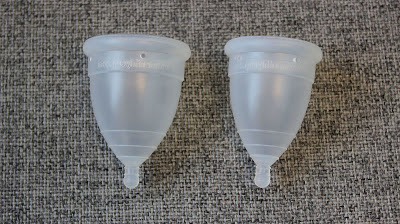The two major pros of using menstrual cups have been cost-effectiveness and comfort of use.
Women of reproductive age are faced with the challenge of containing the three to seven days of blood flow during their monthly menstrual cycle.
Though a lot of ladies have adopted menstrual pads or tampons for their monthly periods, menstrual cups are now quickly gaining popularity as an alternative to pads and tampons.
Why is this?
The two major pros of using menstrual cups have been cost-effectiveness and comfort of use.
Conventional products such as sanitary pads and tampons are becoming very expensive, steadily going beyond the purchasing capacity of many women, especially women from low-income households.
Unable to buy these expensive products, they are forced to use other means to manage their cycles, such as using strips of cloth or more recently, reusable pads.
A single menstrual cup goes for as low as N4000, and due to the nature of its use saves months in pad purchases. The cups come in a range of sizes.
A number of brands make menstrual cups, they are typically bell-shaped and made of flexible, medical-grade silicone.
Unlike pads and tampons, the cups do not absorb blood but simply collect it. This means it will need to be emptied about every 6–12 hours, depending on how heavy a woman’s flow is.
To make use of the cups, it will need to be folded and inserted into the vaginal canal. There are many options for how to do this and lots of online tutorials showing different folding styles on YouTube to practice folding and inserting the cup. Once inserted, It shouldn’t feel there is anything inside and it shouldn’t leak.
The cup is to be cleaned with gentle soap and warm water after each use. If it needs changing in a shared or public restroom, wet wipes can be used to clean the cups.
To address safety concerns on the use of menstrual cups, Peoples Gazette spoke with Onyinyechi Amarachi from Supreme Clinic, Abuja.
“It is safe. Most people are put off by it because they have to put their hands in their vaginas while inserting, but the important thing is that your hands have to be clean before insertion.
“With pads and tampons, you’re sitting on period blood and we all know that it can be messy especially for people with heavy flow who have to change more often, but with cups, you get a period of 12 hours before you discard contents of the cup, for people with the heavier flow the time frame is eight to 10 hours. This is easier to deal with than pads or tampons generally and using the cup reduces the risk of toxic shock syndrome,” the expert offered.
Studies have shown that menstrual cups are safer for use than tampons and pads; Healthline outlines the pros of using cups over other menstrual products, allaying the fears of infections and toxic shock syndrome in proper use.
Also, sanitary pads and tampons come with a huge environmental impact; a single sanitary pad takes between 500 to 800 years to decompose as it contains 2.4 grams of plastic. Most women are expected to menstruate for close to 40 years, between five to seven days a month.
One woman in her active menstrual period disposes of 11,000 menstrual products; that is a total of 26.4 kg of plastic.
In 2019, National Geographic released a report on how the plastic contained in pads and tampons is unsustainable for the planet.
The report noted that “In 2018 alone, people in the U.S. bought 5.8 billion tampons, and over the course of a lifetime, a single menstruator will use somewhere between 5 and 15 thousand pads and tampons, the vast majority of which will wind up in landfills as plastic waste.”
Though the report recommended using non-single use products like menstrual cups and reusable pads to reduce the strain on the environment, it all comes down to preference, some women like cups because they don’t have to change them as often as other products and because they’re reusable, while others don’t.
Culled: Peoples Gazette




























![The Statesman’s Return — OGD in the Senate and the Rebirth of Strategic National Leadership [Part 5]](https://newsheadline247.com/wp-content/uploads/2024/07/Gbenga-Daniel-newsheadline247_1-324x160.jpeg)